Abstract
The author first considers the concepts of “behaviouristic resistance” and “vigour tolerance”. He concludes that neither phenomenon, if it exists at all, is likely to present a serious obstacle to major insect control schemes. On the other hand, physiological resistance is a real and important problem and the number of resistant species is growing at an alarming rate. However, since resistance is often localized and usually confined to one or a few insecticides, the full impact has not yet been felt. This situation is likely to change and resistance may eventually become sufficiently general to jeopardize the success of campaigns to eradicate malaria and other vector-borne diseases. The author discusses the various countermeasures that have been adopted on the recommendation of the WHO Expert Committee on Insecticides and adds some suggestions of his own for future research and for the application of insecticides in ways calculated to prevent or overcome resistance.
Full text
PDF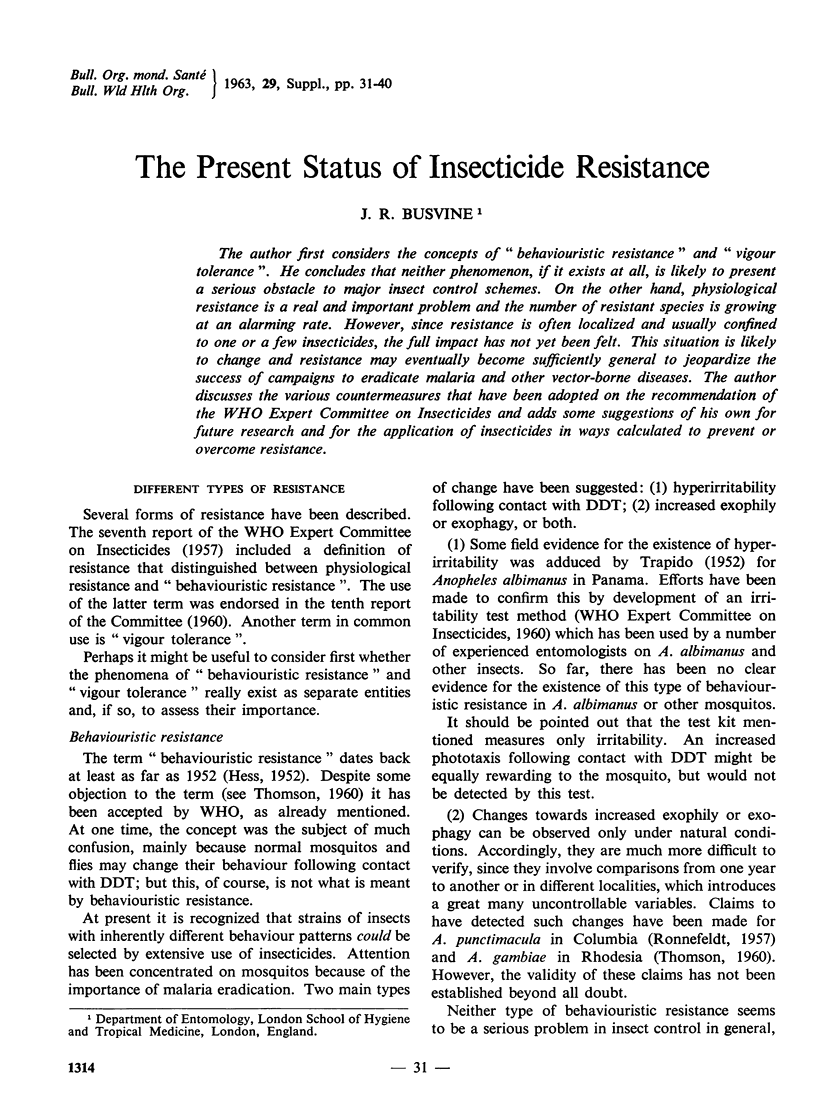
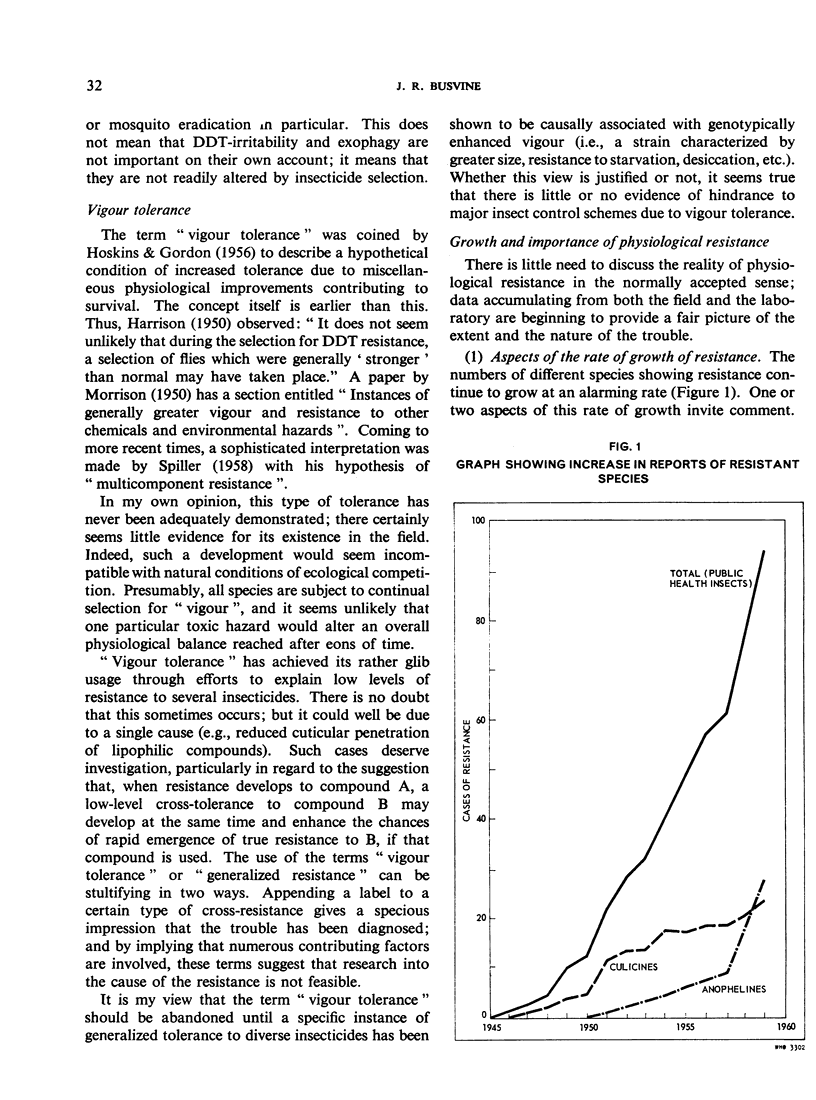
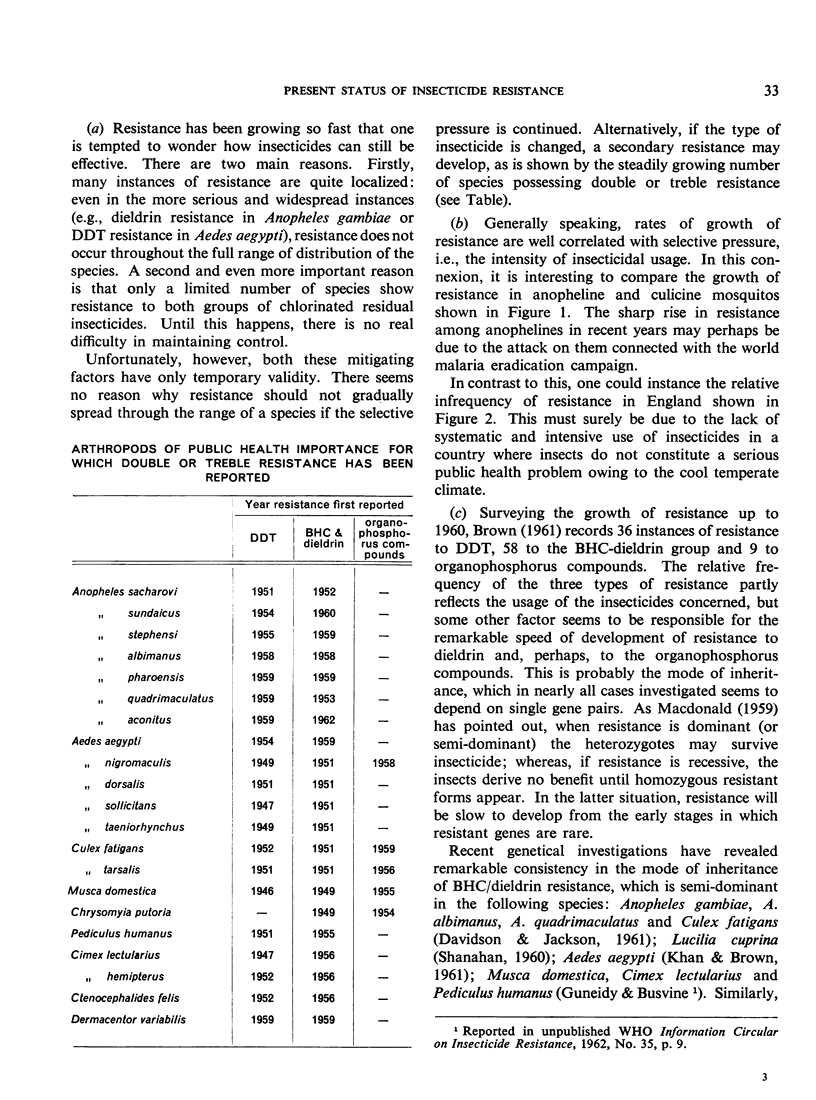
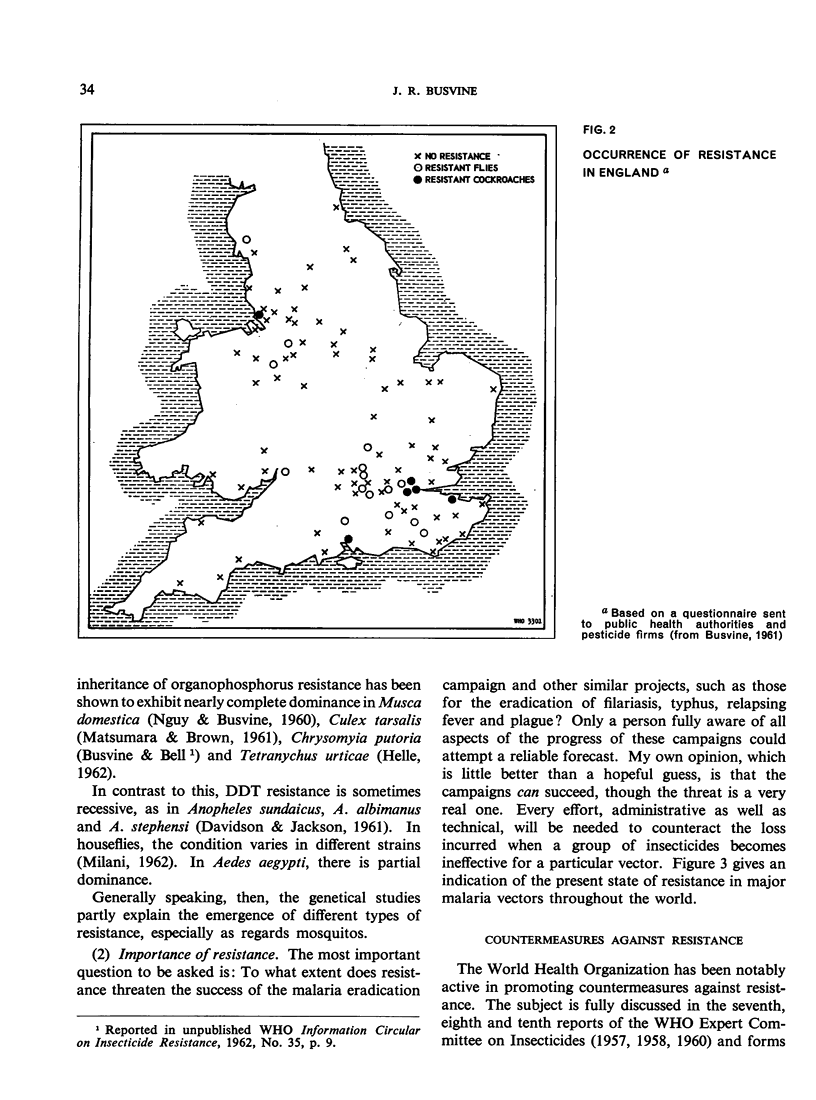
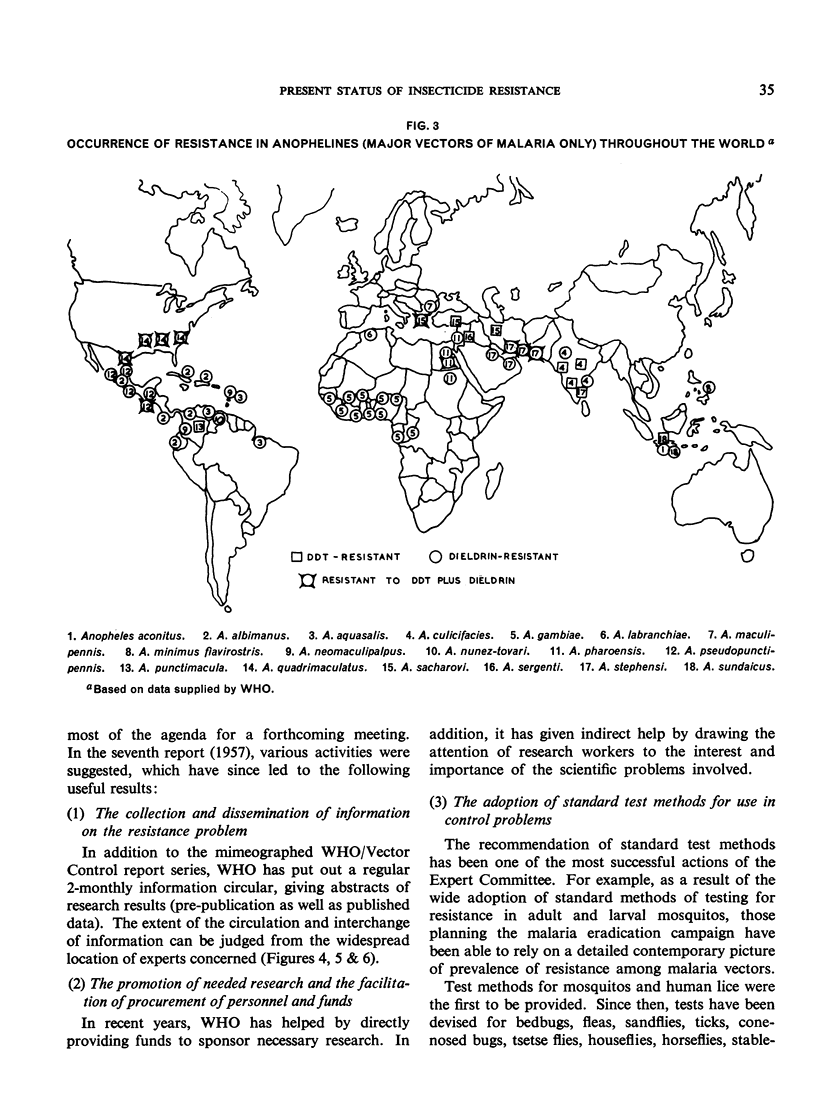
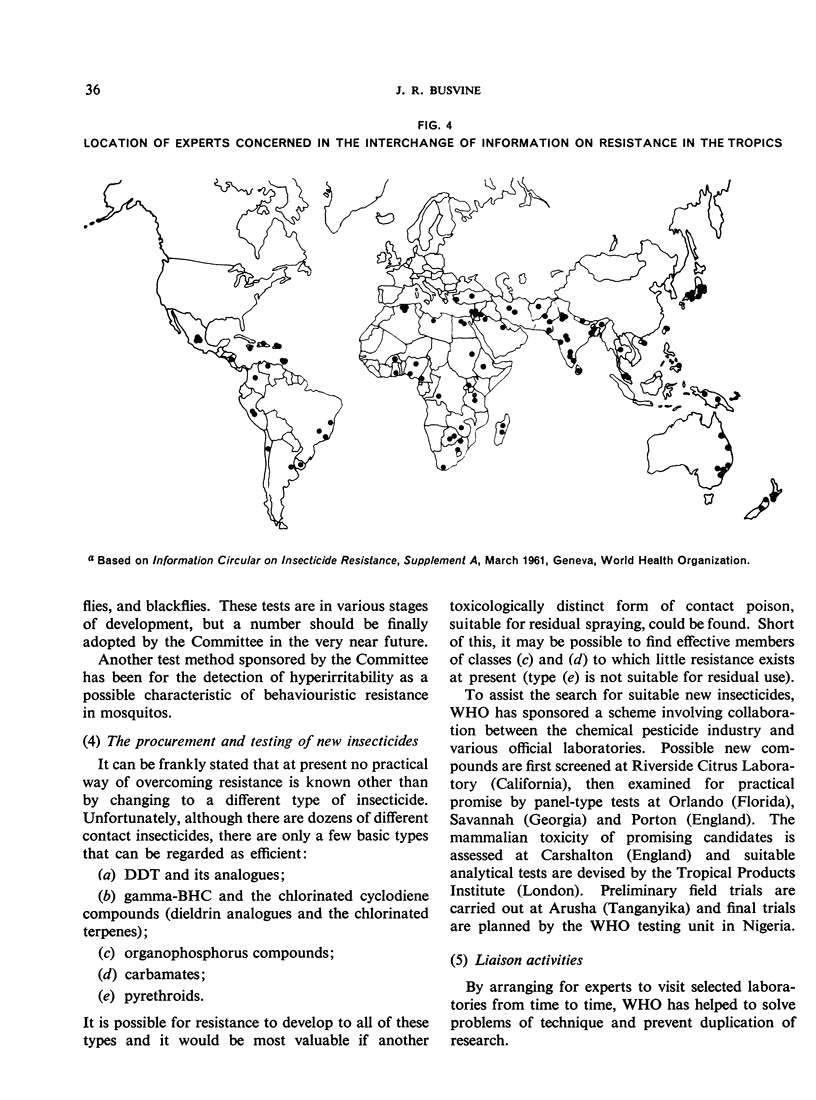
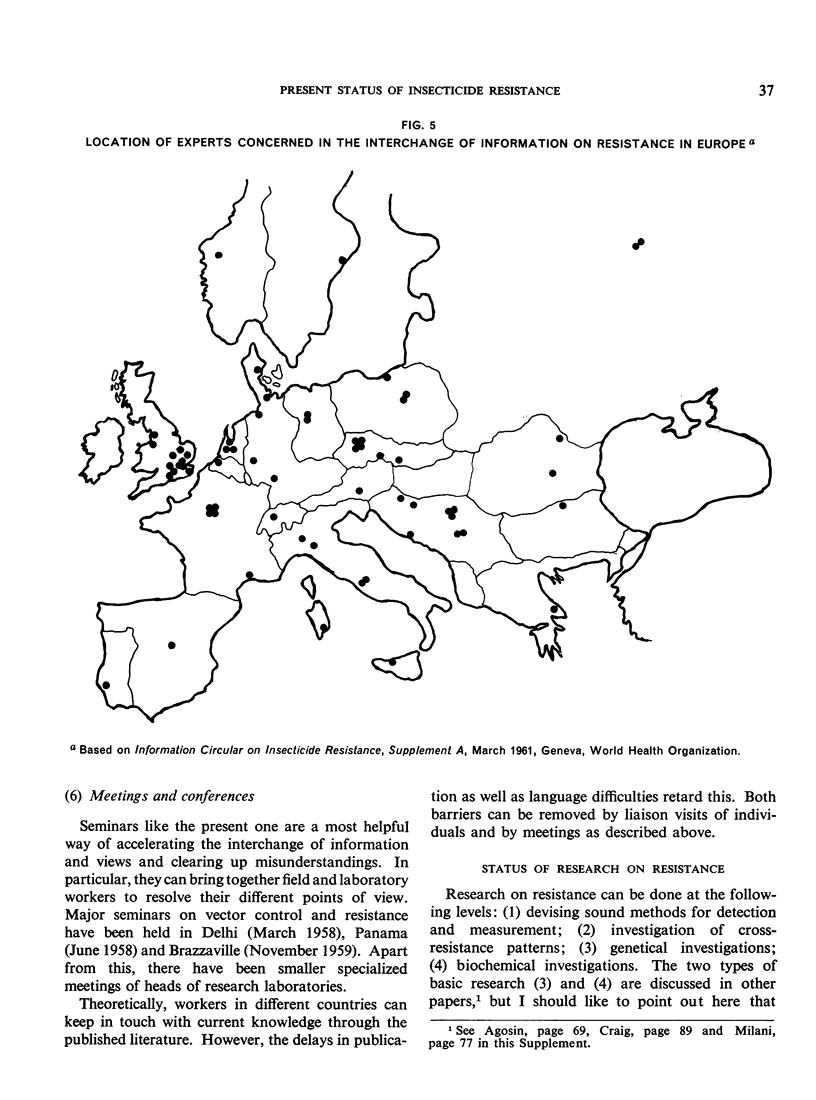
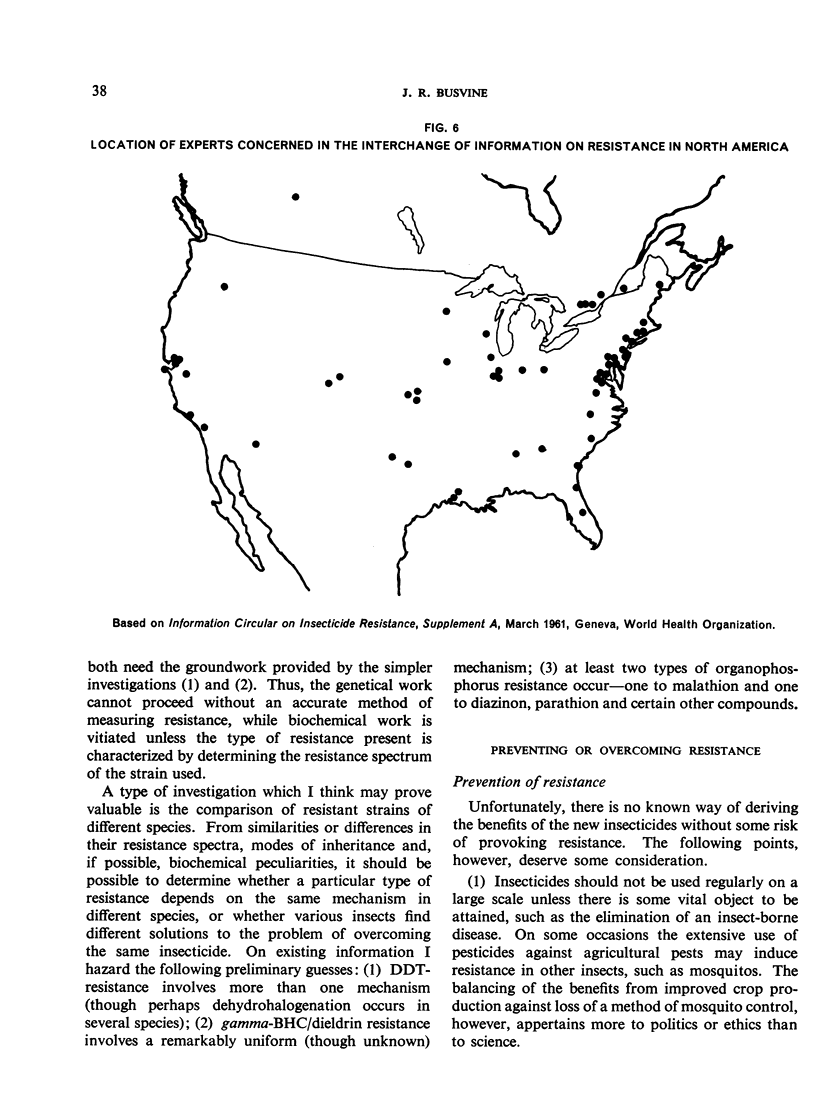
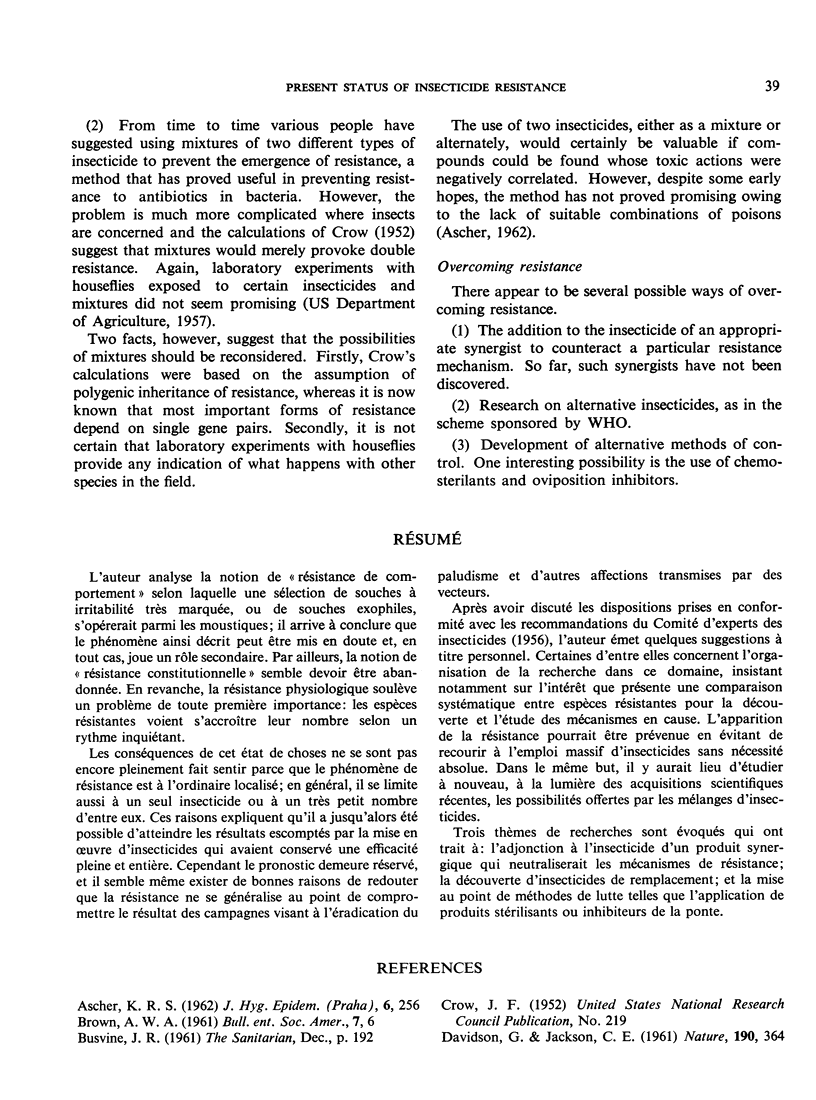
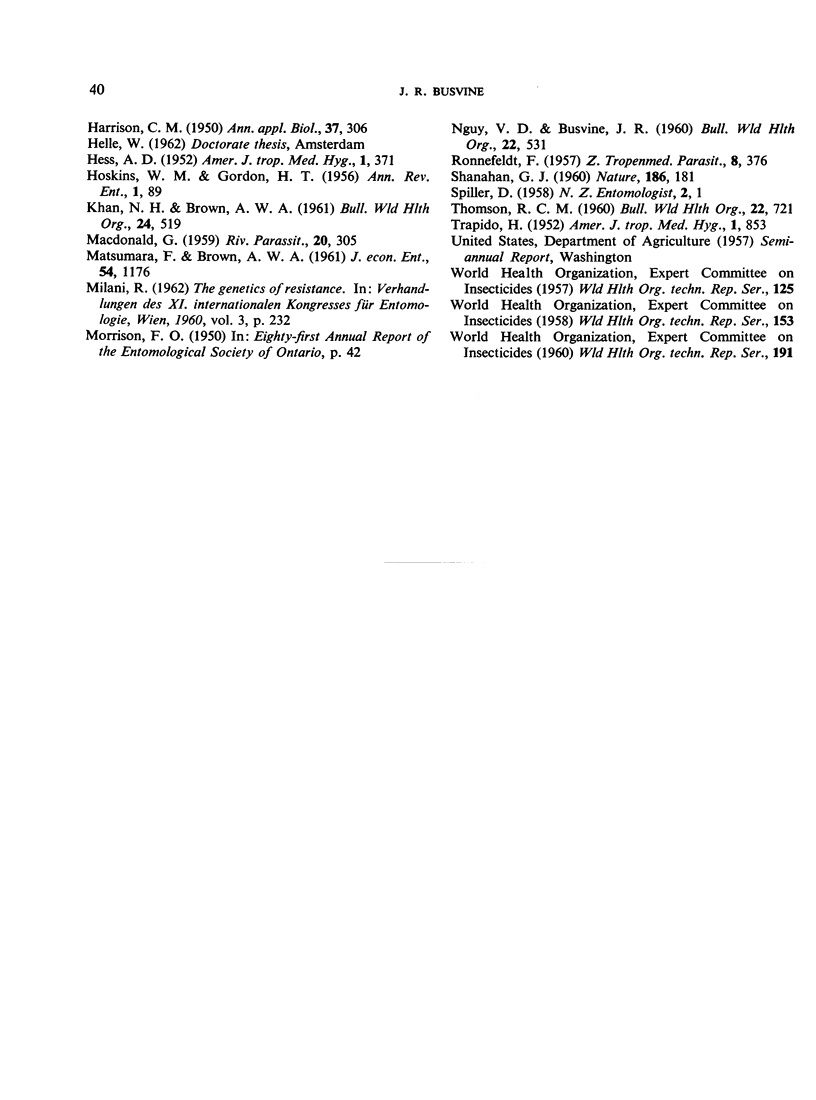
Selected References
These references are in PubMed. This may not be the complete list of references from this article.
- ASCHER K. R. Two new research approaches to the resistance problem, using the housefly as experimental animal. J Hyg Epidemiol Microbiol Immunol. 1962;6:256–264. [PubMed] [Google Scholar]
- DAVIDSON G., JACKSON C. E. Insecticide resistance in mosquitoes. Nature. 1961 Apr 22;190:364–365. doi: 10.1038/190364a0. [DOI] [PubMed] [Google Scholar]
- HESS A. C. The significance of insecticide resistance in vector control programs. Am J Trop Med Hyg. 1952 May;1(3):371–388. doi: 10.4269/ajtmh.1952.1.371. [DOI] [PubMed] [Google Scholar]
- KHAN N. H., BROWN A. W. Genetical studies on dieldrin-resistance in Aedes aegypti and its cross-resistance to DDT. Bull World Health Organ. 1961;24:519–526. [PMC free article] [PubMed] [Google Scholar]
- MUIRHEAD-THOMSON R. C. The significance of irritability, behaviouristic avoidance and allied phenomena in malaria eradication. Bull World Health Organ. 1960;22:721–734. [PMC free article] [PubMed] [Google Scholar]
- NGUY V. D., BUSVINE J. R. Studies of the genetics of resistance of parathion and malathion in the housefly. Bull World Health Organ. 1960;22:531–542. [PMC free article] [PubMed] [Google Scholar]
- RONNEFELDT F. Beobachtungen über das Verhalten von Anopheles punctimacula nach der Anwendung von DDT. Z Tropenmed Parasitol. 1957 Sep;8(3):376–391. [PubMed] [Google Scholar]
- SHANAHAN G. J. Genetics of resistance to dieldrin in Lucilia cuprina Wied. Nature. 1960 Apr 9;186:181–181. doi: 10.1038/186181a0. [DOI] [PubMed] [Google Scholar]
- TRAPIDO H. Modified response of Anopheles albimanus to DDT residual house spraying in Panama. Am J Trop Med Hyg. 1952 Sep;1(5):853–861. doi: 10.4269/ajtmh.1952.1.853. [DOI] [PubMed] [Google Scholar]


